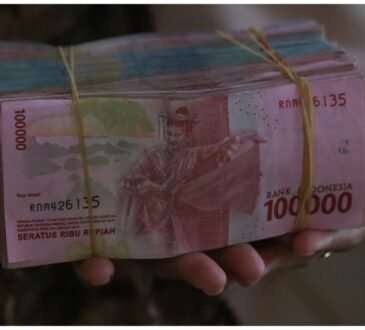Digital Payments
June 17, 2024 | By Sandeep Malhotra

This article was first published in Bloomberg.
While living in Japan, every two months, automotive worker Nguyen Duc Thành would send 50 million Vietnamese dong (around U.S. $2,000) back to his family in Vinh Phuc, Vietnam.
“I chose to move to Japan to secure a steady income for my family and to gain life experience,” says Mr. Thành, “I regularly sent money home to my parents to cover their everyday living expenses but also to provide a contingency fund for emergencies. Supporting my family is essential for me; the money I made and sent back was very important for their wellbeing.”
Mr. Thành is not alone. In the Asia Pacific region, he is one of many people who has moved countries to seek work and explore new opportunities, and therefore be able to financially support family members back home.
Stitching together seamless payment flows
Faster, transparent and accessible cross-border payments are crucial for furthering inclusive economic growth in Asia Pacific. This ensures families back home can receive the money they need, whether to pay tuition fees, medical bills, or to simply cover everyday expenses, as in Mr. Thành’s case.
With around half the world’s annual remittance flows – worth more than $700 billion – passing through Asia Pacific, there is a pressing need for new technologies and modern payments infrastructure that can bear the load.
“Money movement takes many forms,” says Sandeep Malhotra, Executive Vice President, Products & Innovation for Asia Pacific at Mastercard. “But the common theme among senders and recipients alike is the desire for frictionless, fast payments.”
This is equally important for small businesses. As a dominant global manufacturing hub – China exported goods valued at $3.73 trillion in 2022 – businesses in the Asia Pacific region also need frictionless money transfers to operate and pay local and international suppliers and workers on time.
Vietnamese national, Kevin Pham, runs a business to help Vietnamese manufacturers access UK and European markets, and regularly makes and receives payments to countries including Singapore and Korea. He explained, “The cross-border payments system is the backbone of our business operations. For us, secure transactions are paramount for fostering strong relationships with international clients and suppliers. Any hiccup in payments could cause disruptions in our supply chain, strain partnerships, and compromise our reputation for reliability.”
Yet despite the importance of these payments, Mastercard’s latest borderless payments report reveals many people and businesses are still facing delays, lack of transparency and limited choices in making and receiving them. These issues are stifling progress, with people unable to access money when they need it, and even avoiding making payments in the first place. In fact, the report shows 84% of people and businesses making cross-border payments in the Asia Pacific region would send money more often if it were faster to do so.

Mr. Nguyen Duc Thành, on the far left, with his extended family in Vietnam.
Breaking down barriers
Malhotra characterizes “frictionless” payments as being made at high speed, with low costs, and robust security. A process whereby financial data is analyzed and validated quickly, and where people and businesses can get paid digitally and in near real-time.
The digitalization of financial services is gathering pace rapidly in the region, with Mastercard data showing that seven in ten (68%) people making cross-border payments in the region are doing so via an app, whilst 36% are using a digital wallet. Responding to this trend, banks across the region are putting efforts into enhancing their digital channels such as m-banking apps and offering additional services such as remittances. This is a win-win situation as it helps banks monetize their digital channels while building stronger relationships with their consumers. That being said, cash still makes up 16% of payments in the region, and so with a range of payment methods still in use, people and businesses must have choice over how they send and receive money.
“Asia Pacific has a high diversity of both sender and receiver markets,” adds Malhotra. “Sender markets tend to be more developed, while receiver markets are usually developing. We therefore need a diverse range of solutions to meet the requirements of different customer segments – for example, white collar workers tend to prefer digital and mobile solutions, whilst blue collar workers often opt for cash agents.”
Innovation futurist Shivvy Jervis, explains, “While sending money home to many places in Asia is improving for many, removing barriers to recipients accessing that money is still a challenge. This is often due to a lack of venues for cash agents and subsequent long queues at those locations, as well as concerns about security.”
For Malhotra, industry players – from leading fintechs to incumbent financial institutions – need to work together to deliver this choice and ensure safer, simpler, and more seamless cross-border payments.
Via Mastercard Move, the company’s portfolio of money movement solutions, Mastercard is working with banks, fintechs, digital wallets, and governments to enable people and businesses to send funds to multiple payout options in over 180 countries. Subject to specific market availability, this includes bank accounts, wallets, and cards – as well as to over 300,000 cash pick up locations worldwide.

Mr. Kevin Pham, on the right, with a Vietnamese government trade representative at a furniture trade show in the UK.
Fostering greater inclusion
Ensuring quick, convenient payments in Asia Pacific – whether it’s within one country or across borders – will help lift the region’s economy as a whole and deliver inclusive growth by allowing people and businesses to send and receive money how and when they choose, with greater certainty. As Jervis points out, “Digital financial infrastructure directly correlates with growth and inclusion.”
Mr. Thành’s situation showcases just how important this is for families. “My becoming financially independent has coincided with my parents’ retirement, which means they are now without a steady income. Families like mine, where parents lack a pension and have exhausted their income on their children’s education, particularly with younger children still in school, could face major challenges in their later years. Having an individual with a stable income to offer support to the rest of the family is crucial.”
To learn more about Mastercard’s money movement solutions, visit the website.



